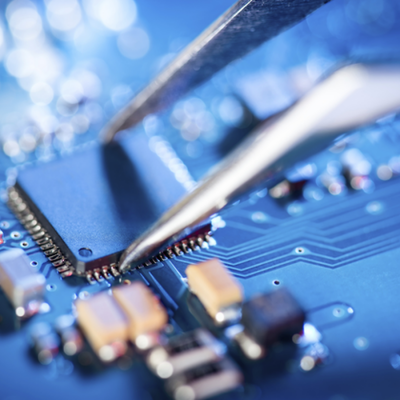
Within an area no bigger than a shirt button, a microchip holds as many as 450,000 electronic components. They are linked into electric circuits and are visible only under a microscope.
Microchips have transformed modern life and made some of the science fiction of the past into reality. They regulate digital watches, set programs on washing machines, and beat us at video games. They also manipulate robots on car-production lines and control national defence systems.
Electronically, the circuits that make up a microchip are not particularly complex —many are just switches. Their wizardry lies in their minute size, which allows signals to flow through at lightning speed. So they can carry out up to 250 million calculations in a second.
Most microchips are made of silicon, one of the most abundant elements on earth, and easily obtained from sand and rocks. A few are made from gallium arsenide — a compound of arsenic and the metal gallium, found in minerals such as coal.
Chips for everything
There are various kinds of microchip. A microprocessor chip can be a computer in itself – in a washing machine, for example. Or it can be the nerve centre of a larger computer, controlling all its activities.
Memory chips store information in computers on sets of identical circuits —either permanently or temporarily. Interface chips translate the signals coming into the microprocessor from outside — such as from a keyboard — into binary code so that the electronic circuits can handle it. They also translate the outgoing signals back into figures or words for the computer screen.
Clock chips provide the timing needed for all the computer circuits to process electric signals in the right sequence. Each is linked to a quartz crystal that vibrates at a precise frequency.
Picture Credit : Google

